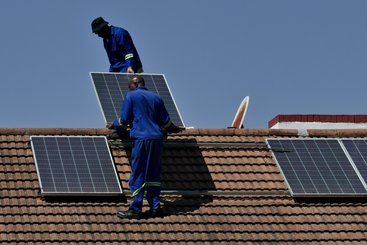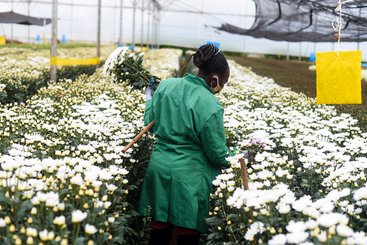The European Union’s (EU) Carbon Border Adjustment Mechanism (CBAM) regulation, which entered into its transitional phase this month, has made promises about a commitment to collaborate with and support low- and middle-income countries in decarbonising their manufacturing industries. However, when it comes to Least Developed Countries (LDCs) such as Mozambique, which has consistently been identified as being adversely affected by its CBAM, the specific support measures are still unknown.
But how will this support be provided? Will it be directed towards the affected firms themselves, or will it primarily focus on helping governments develop equivalent systems that could help in the decarbonisation process? Moving from the country to the firm level, in the case of Mozambique, it is a large transnational corporation that will need to either reduce emissions or pay the price.
There are issues regarding the transfer of resources to the EU through the submission of credits, rather than to those countries where the emissions are generated. This situation may occur due to the lack of fully functional domestic systems capable of providing the desired “equivalence”. This may result in a transfer of resources that could have otherwise been utilised to support decarbonisation efforts in producing countries.
The CBAM’s data requirements and resultant implications for administrative systems are nothing short of formidable. For equivalent measures to be recognised (referred to under Article 9 Carbon price paid in a third country), independent certification will be required. This raises the spectre of technical and financial barriers to compliance - who will provide conformity assessments to the certifiers?
Moreover, there are specific issues regarding carbon pricing for which greater detail is needed, “with the EC empowered to adopt implementing acts” regarding the conversion of the carbon price effectively paid into the corresponding reduction of CBAM certificates to be surrendered (referred to under Article 9.4).
The potential revenue from CBAM is estimated to exceed US$80bilion per annum by 2039, depending on the carbon price and emissions intensity. There will be costs for compliance too. In terms of operationalisation, a transition period to enable adequate preparation is provided. This includes the use of EU reference values by 2025 and by 2026, a requirement for importers of affected goods, to pay.
At COP28 the rulebook for Article 6 is expected to be finalised and the expectation remains that high-integrity carbon markets can be secured. The international trade dimension of sovereign carbon markets plays a vital role in cost-effectively reducing emissions and supporting cap and trade systems. Not only does this have economic benefits, but if the savings made possible through carbon trading are re-invested, then climate ambition can be further enhanced.
Many developing countries have expressed their intentions to develop sovereign carbon markets to achieve the ambitions specified within their Nationally Determined Contributions (NDCs) submitted as part of UNFCCC processes. Developing carbon markets (for example, domestic emissions trading schemes) may not only be a route to adjusting to EU carbon border measures but also offer opportunities to finance green transition and fulfil the sustainable development aspirations outlined in their NDCs.
The EU should seek to support these efforts. Clarity on the type of support the EU is willing to extend to Africa and LDCs like Mozambique, to help them navigate the challenges posed by CBAM and how, is now needed.
Africa, in turn, also needs to be more vocal on this front, following in the footsteps of India, China, and more recently, in Latin America - Brazil, who have been actively engaging in the dialogue.
By unravelling the path to support and fostering transparency, we can ensure that the rhetoric surrounding CBAM aligns with its real-world impacts; creates meaningful change on the journey towards a greener future; and finally, avoids a “green squeeze” on producers in countries that have barely contributed to global greenhouse gas emissions.



